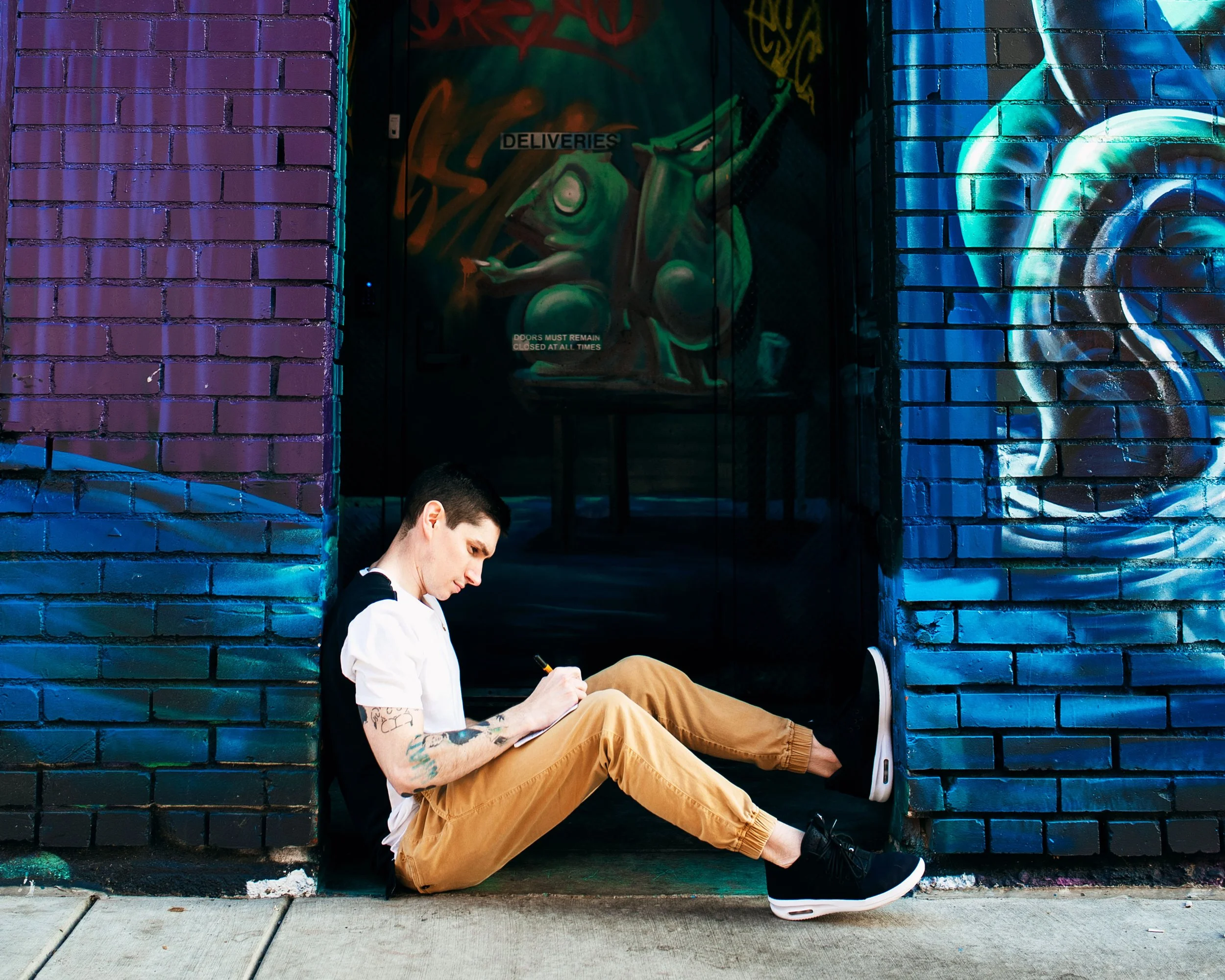
Hey, I’m Scott Hofford
I've been drawing since the early 90’s and working professionally as a designer since 2010. What started as a natural skill became a strategic advantage: I'm one of the few designers who can both think strategically about brand systems and execute custom illustration at a professional level.
Throughout my career, I've worked at agencies, in-house, and as a freelancer—collaborating with brands like Nike, Dutch Bros, Chevrolet, Wrangler, Yogi Tea, and Kimberly-Clark. That range taught me something important: the best work happens when strategic thinking and hands-on craft work together, not separately.
Whether I'm developing a complete visual identity, creating custom illustrations for editorial or merchandise, or creating Iconoflage artwork for an installation, every project starts the same way: understanding your story before touching a single design tool.
Why Hand-Crafted Matters
Most brands today are chasing the same aesthetic: clean, minimal, safe. Identical sans-serif logos. Stock illustrations. AI-generated patterns. It all blends together.
I take a different approach. Every project combines strategic thinking with actual craft—hand-drawn elements, custom illustrations, research-driven design decisions. Not because "imperfect is authentic" (that's a cliche), but because custom work solves specific problems that templates can't.
When Dutch Bros needed a headquarters installation, they didn't want generic corporate art. When Campbell Ewald needed racetrack illustrations for Chevrolet, stock images wouldn't work. When base5280 wanted Colorado merchandise that stood out, the 47th version of the state flag wasn't the answer.
That's where I come in: creating work that's uniquely yours because it's built specifically for your story, your audience, your goals.
The hand-crafted aesthetic isn't a style choice—it's a strategic one. It signals that someone invested time and thought into this, not just applied a template. And yes, that means you'll see the human touch in the work. That's the point.
Where the Aesthetic Comes From
My design aesthetic didn't start in design school—it began in middle school, when I would cut out my favorite skateboard deck graphics from CCS catalogs and glue them into notebooks. I grew up skateboarding, riding BMX, and rollerblading, completely immersed in action sports culture.
In high school, I worked at a local bike shop—partly for the paycheck, partly to get a mountain bike. Those years exposed me to the intersection of technical engineering (frame geometry and bike components) and bold visual expression (product design, brand identities, and graphics).
The combination of action sports and street culture shaped my entire visual approach. I learned that the best brands don't blend in—they commit to their personality, even if it's rough around the edges. I incorporate that philosophy in everything I create.
The graffiti-influenced lettering, the hand-painted shoes and skateboard decks, the Bad Luck brand's aesthetic—they all trace back to those formative years when I was surrounded by brands that weren't afraid to have personality.
Now I bring that same energy to client work: bold visual storytelling that doesn't play it safe. Whether I'm working with agencies, corporate clients, lifestyle brands, or back in the action sports culture where it all started, the underlying philosophy stays the same—create work with authentic personality, not sanitized corporate decoration.
Want to see where this aesthetic comes from?
How Projects Work
I don't start by opening design software. I start by understanding your story.
What's your brand's history?
When did you start, and why? What pivots shaped who you are today?
Who's your audience?
Not demographics—actual people. What do they care about? What problems are you solving for them?
What makes you different?
Not "we care about quality" (everyone says that). What do you do that competitors don't or can't?
Once I understand those answers, the design work becomes purposeful instead of decorative. Every icon in an Iconoflage piece represents something real. Every color in a brand identity connects to strategy. Every illustration serves the larger story.
This research-driven approach means projects take longer than template-based work. But the results last longer too—because they're built for you, not adapted from someone else's solution.
What Guides My Work
Driven by Research, Not Decoration
Every design decision comes from understanding your story, not just making things look good. If I can't explain why something's in the design, it doesn't belong there.
Strategy +
Craft
Most designers can think strategically OR execute hands-on illustration. Doing both means I can develop the concept and create the custom elements without outsourcing or compromising.
Quality Over Quantity
I'm selective about projects. If I take yours on, it means I believe I can do excellent work for you—and every piece I create needs to meet portfolio standards.
Partner, Not Service Provider
The best results come from collaboration. I'll ask questions, push back when I think there's a better solution, and advocate for what serves your goals—even if it's not what you originally asked for.
Beyond the Studio
I'm a runner who learned early that growth happens when you show up consistently and push beyond your comfort zone. You don't see results immediately, but you trust the process. That work ethic carries directly into how I approach client projects.
I'm also a percussionist. I played from grade school through the University of Oregon marching band drumline. My role wasn't to steal the spotlight; it was to keep time, provide foundation, and set up the band for their big moments. That's how I approach client work too: I'm here to make your brand look great, not compete for attention.
Outside of work, you'll find me nerding out over Formula 1, playing with my kids, or solving puzzles. I've always been drawn to figuring out how pieces fit together and finding patterns—skills that translate directly into design problem-solving.
Let's Talk About Your Project
Think we might be a good fit? I'd love to hear what you're working on and explore whether I can help bring your vision to life.



